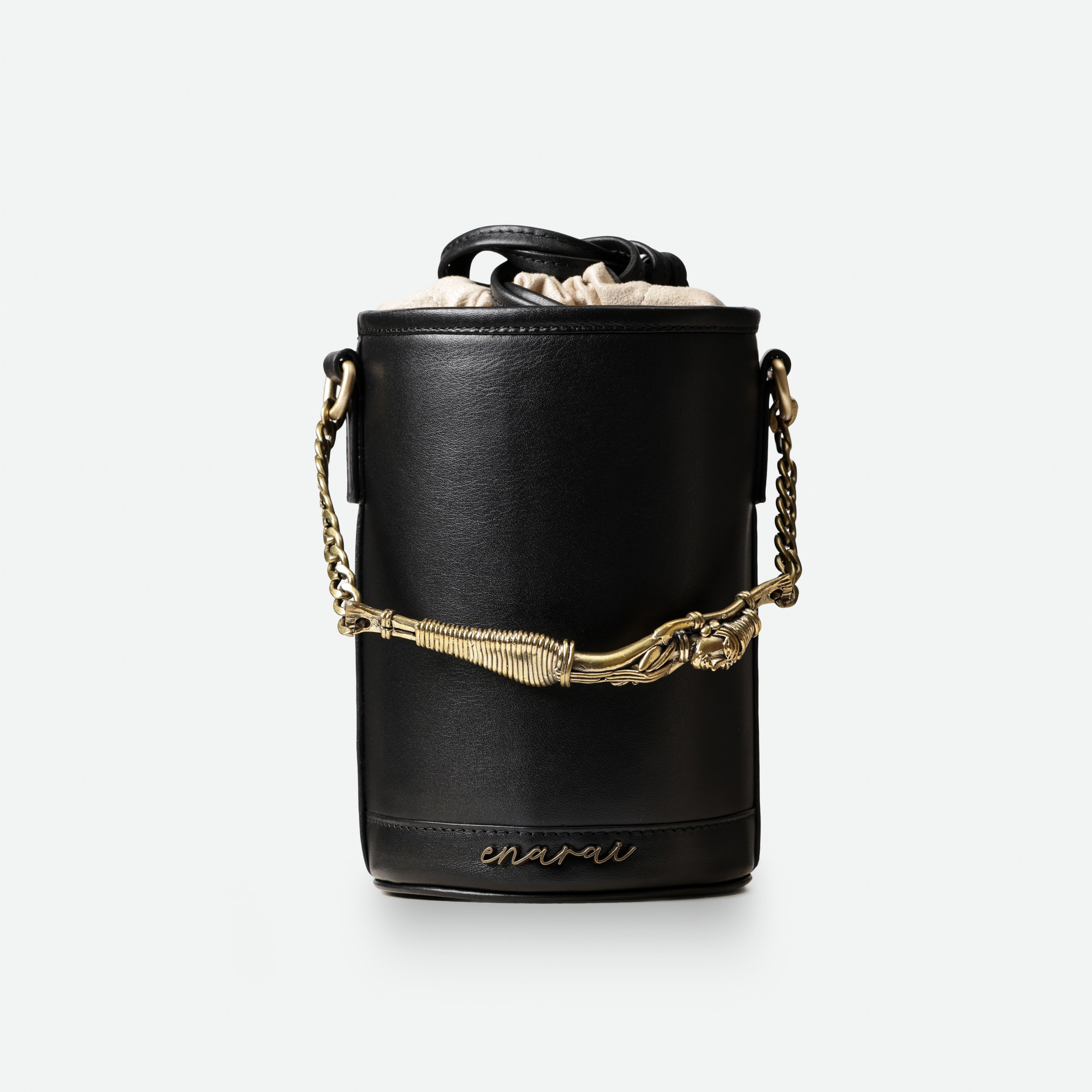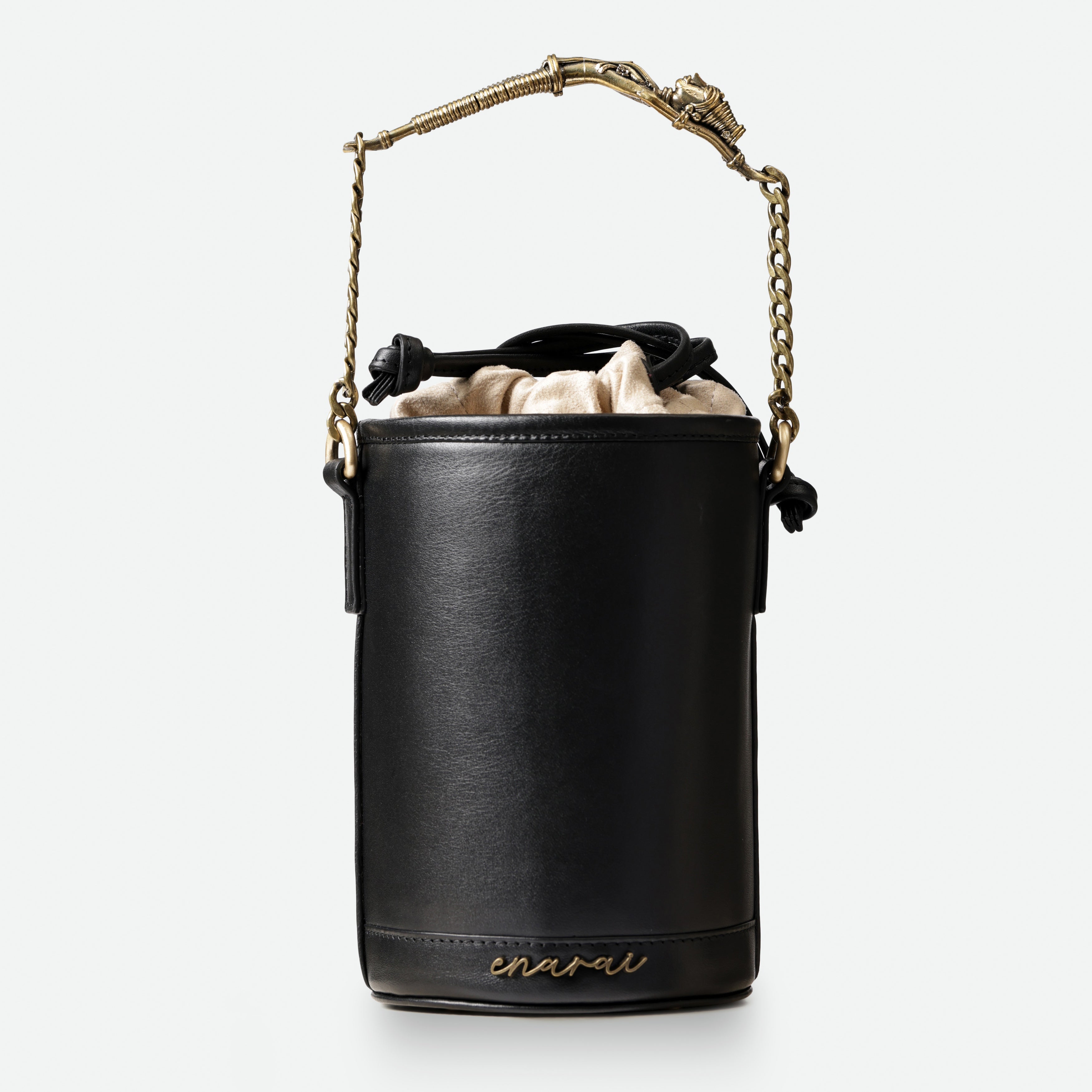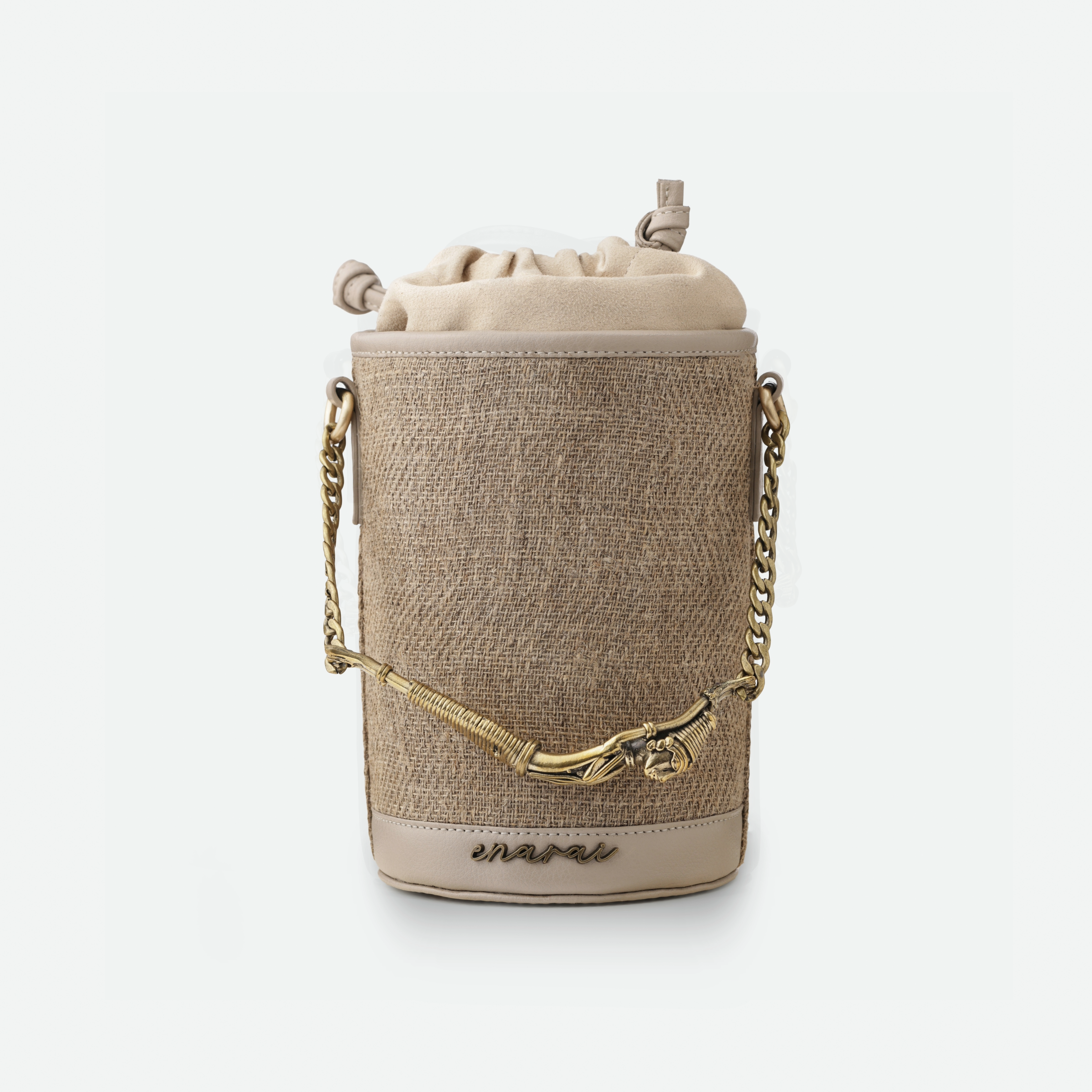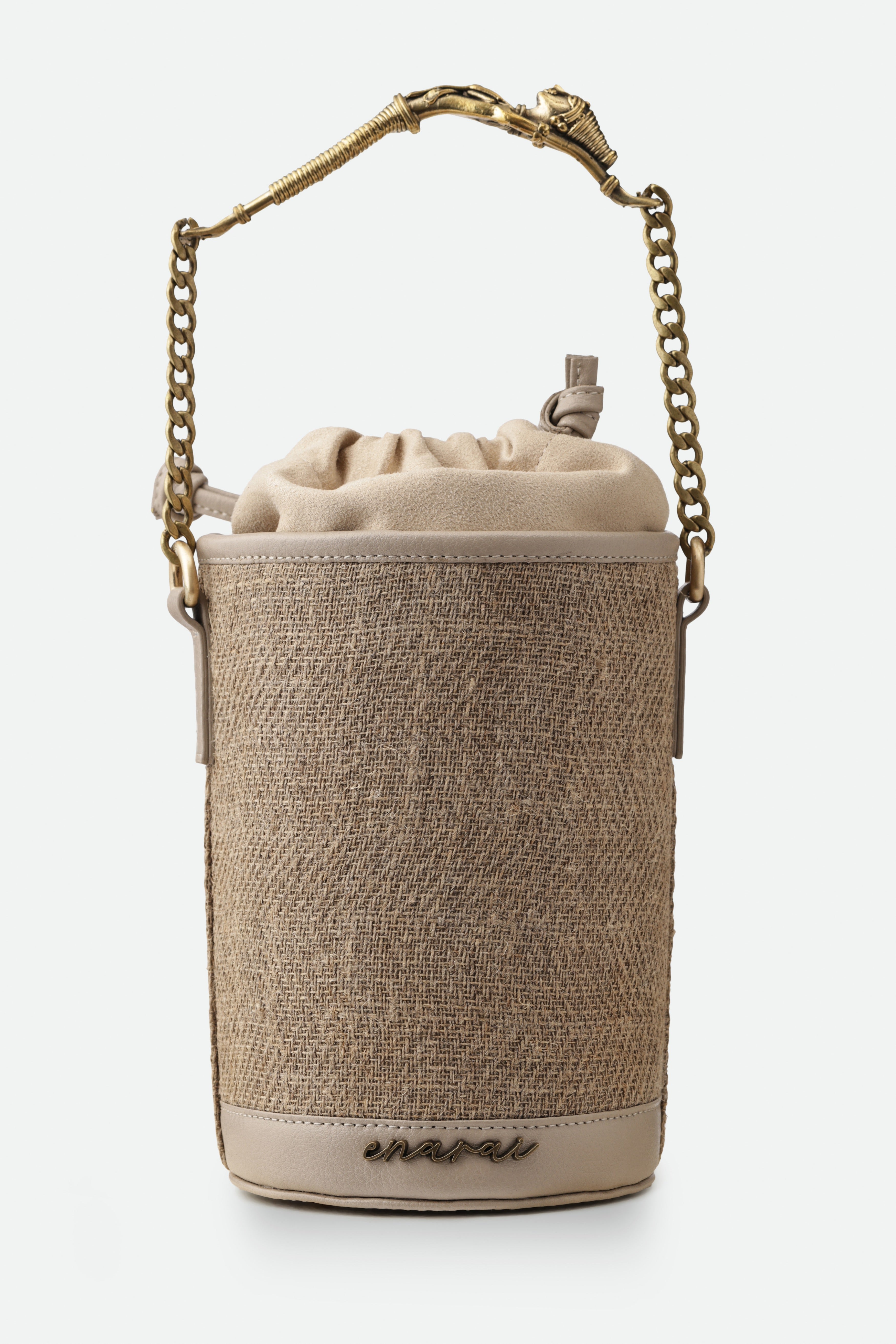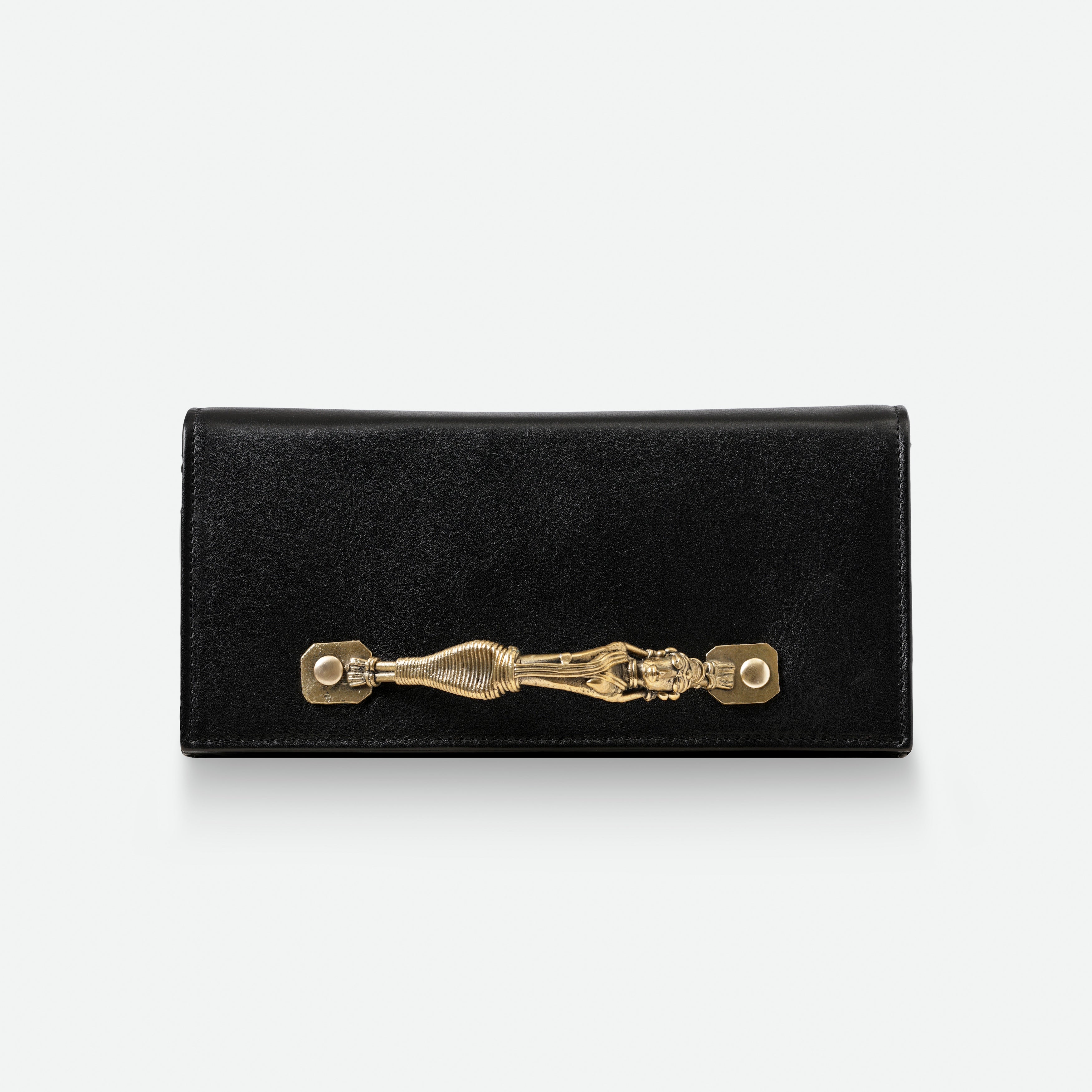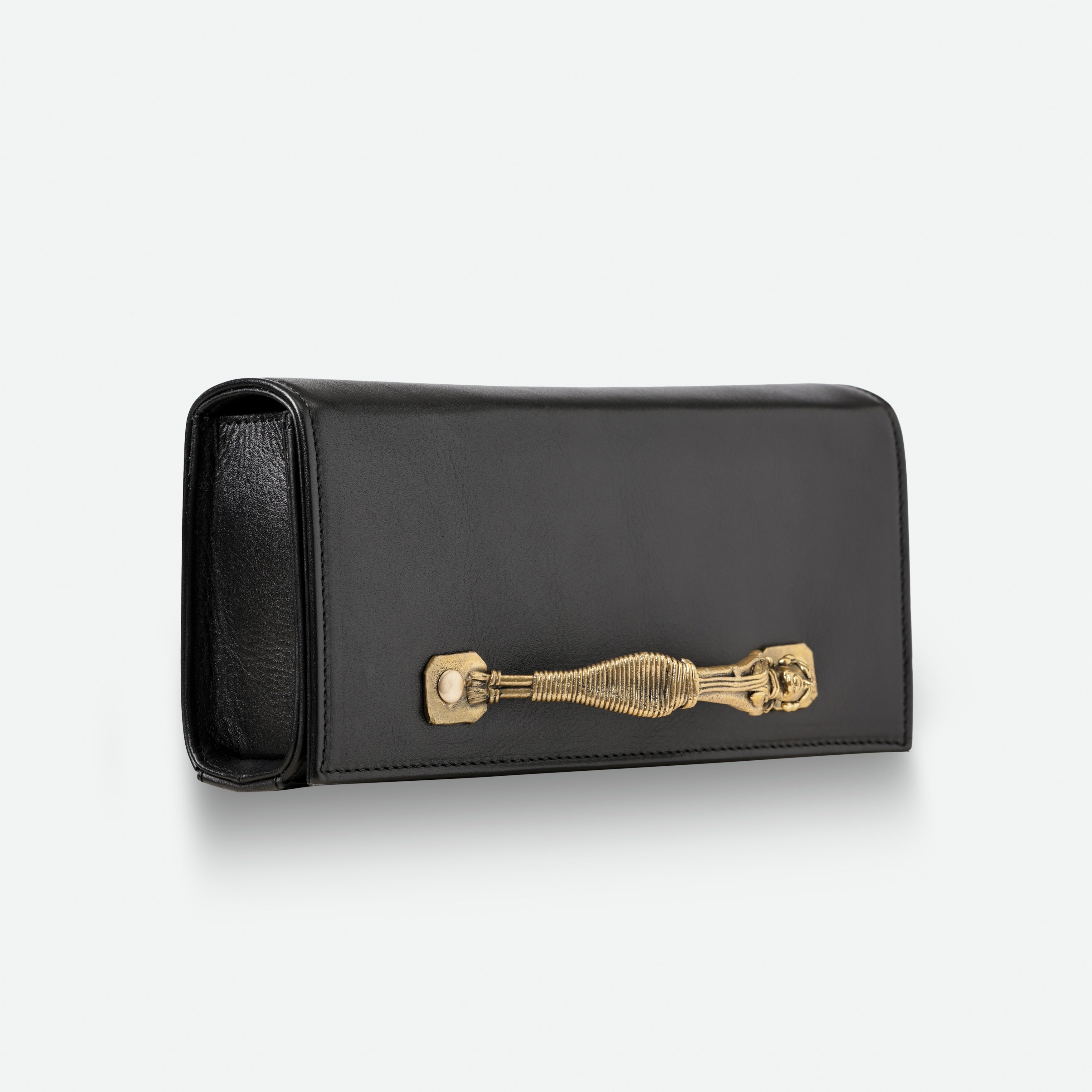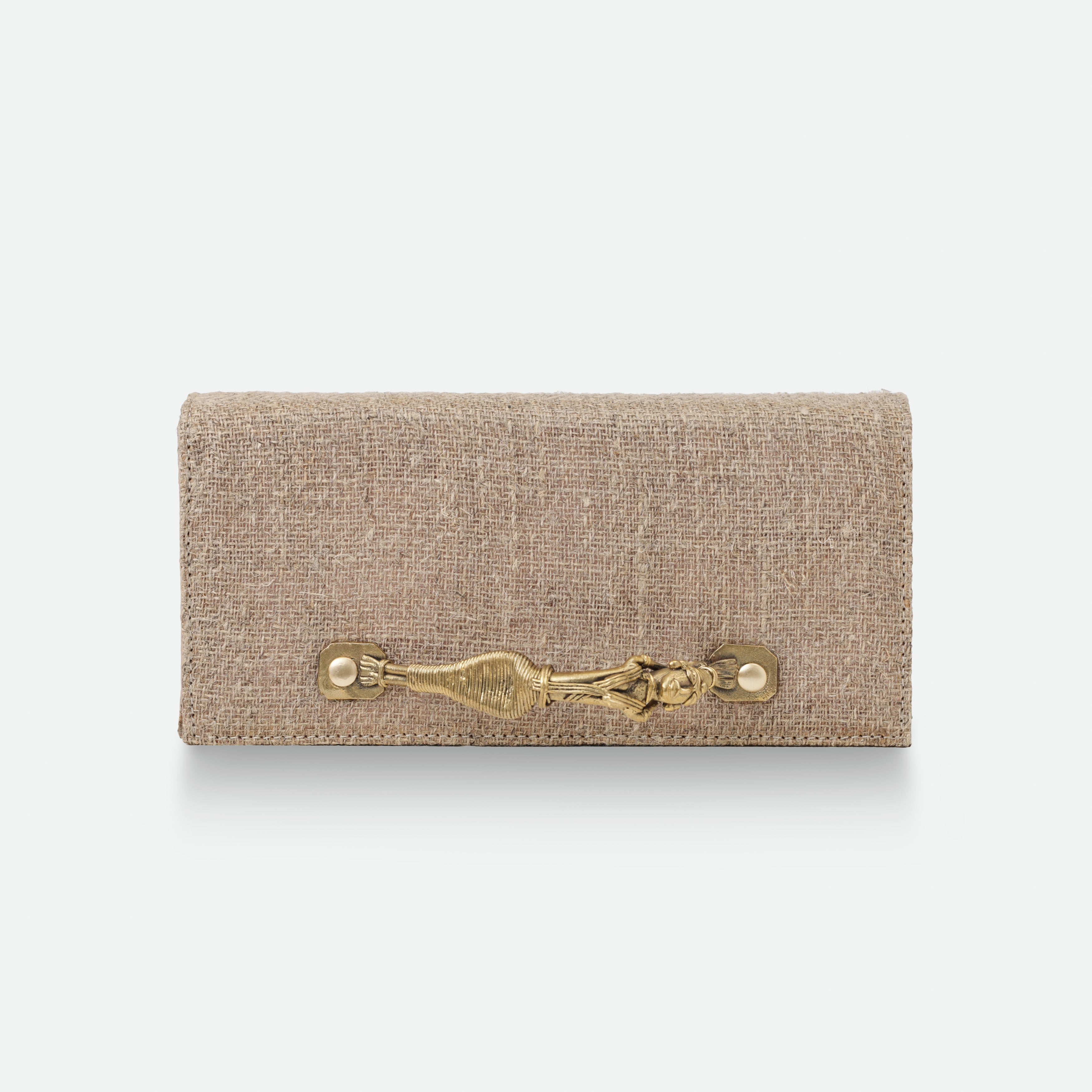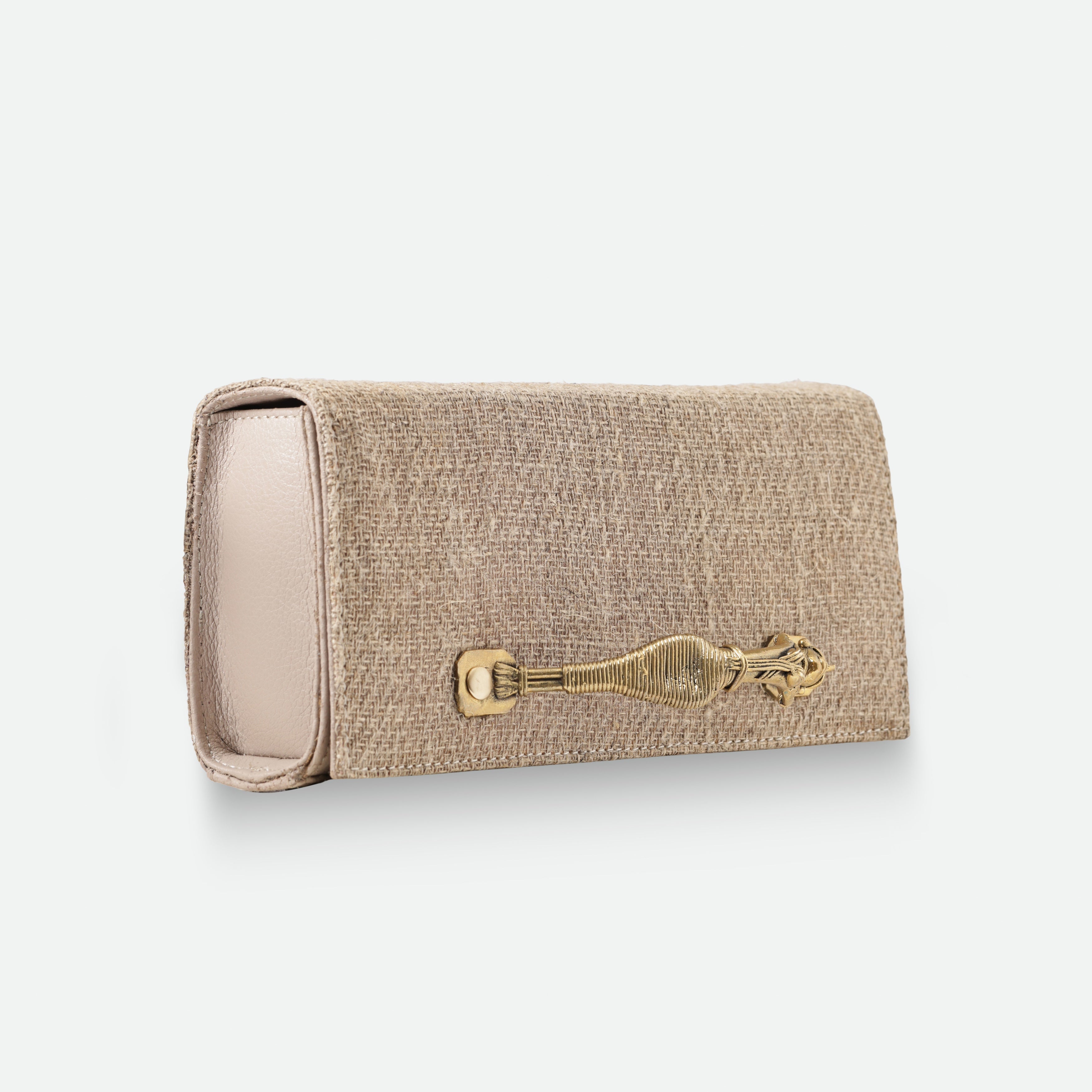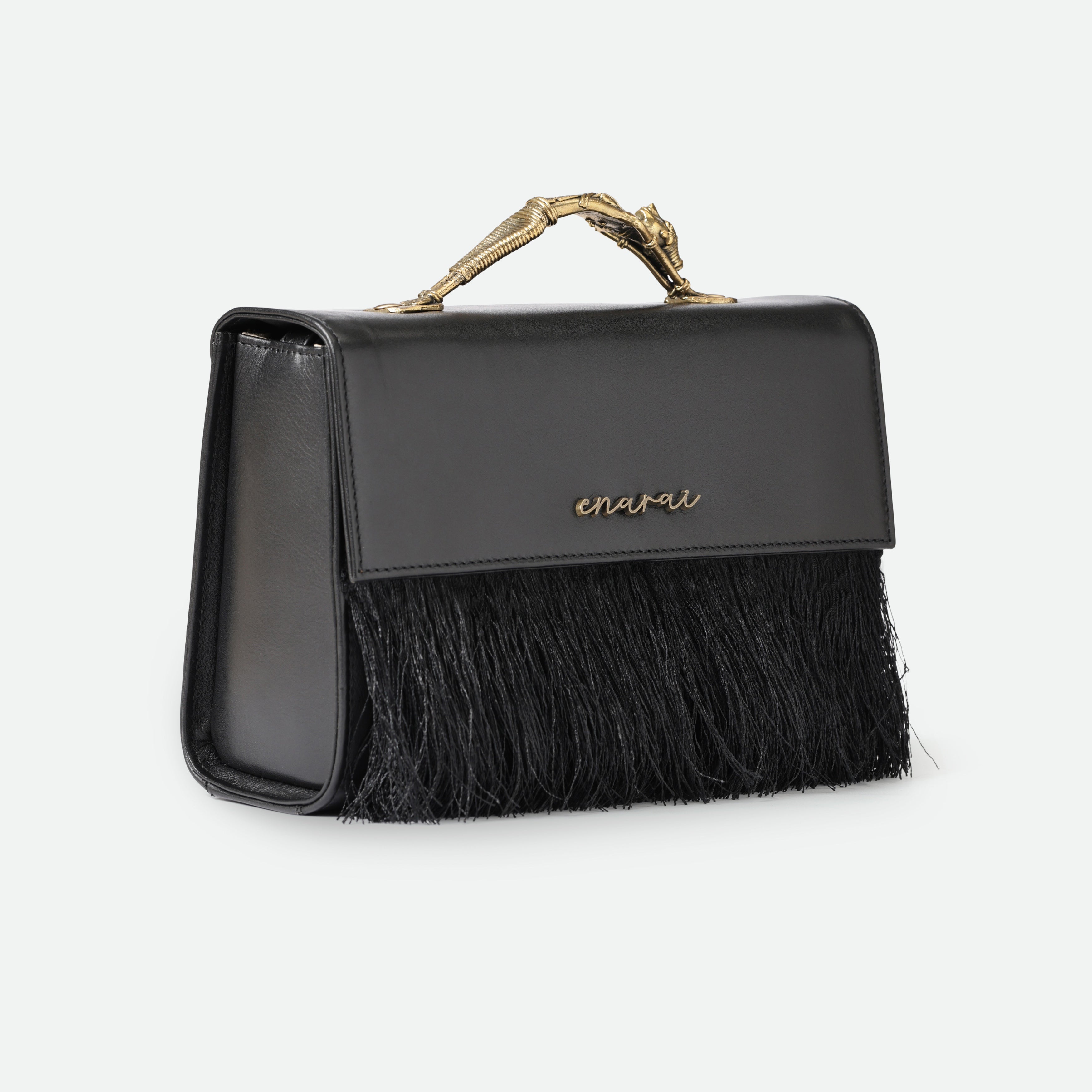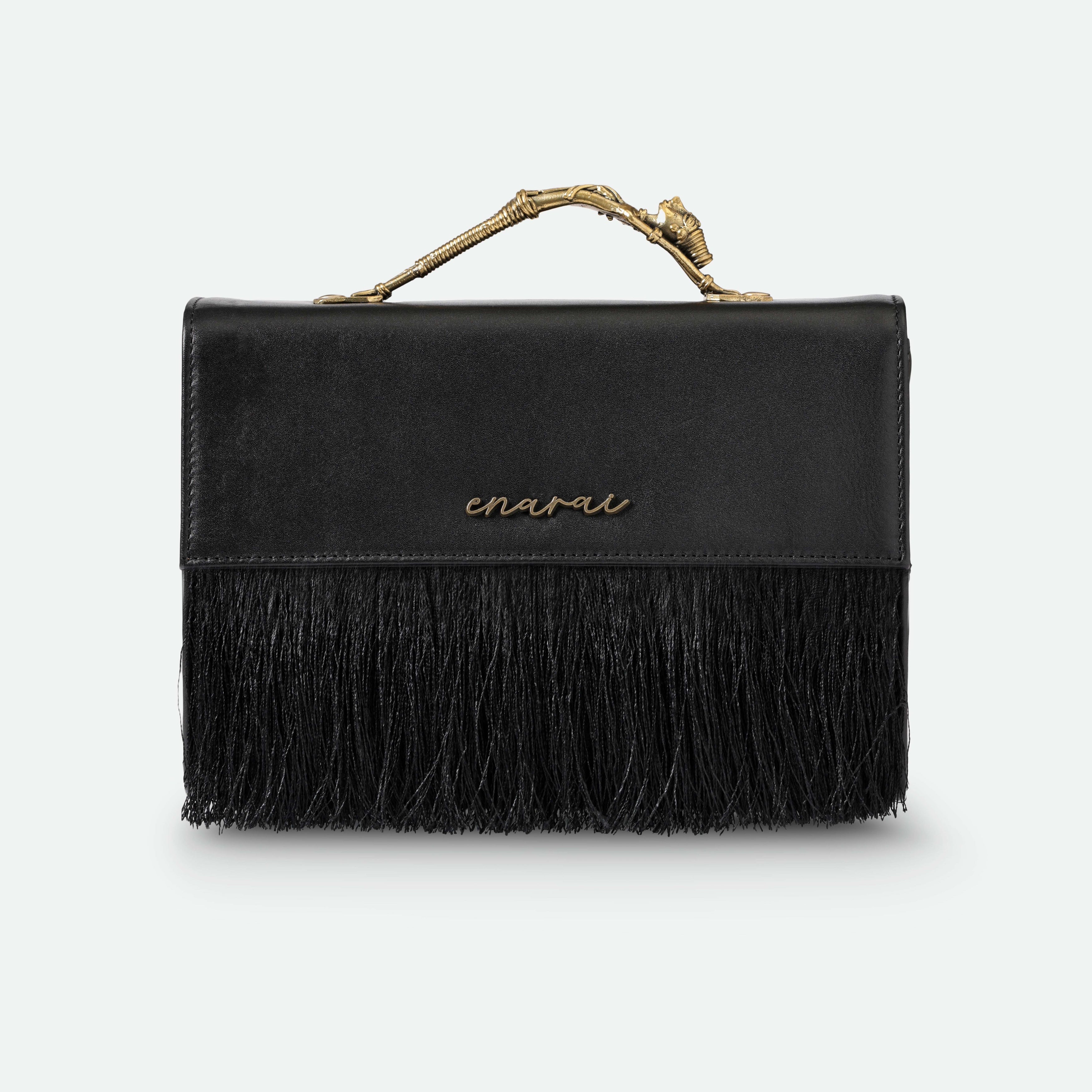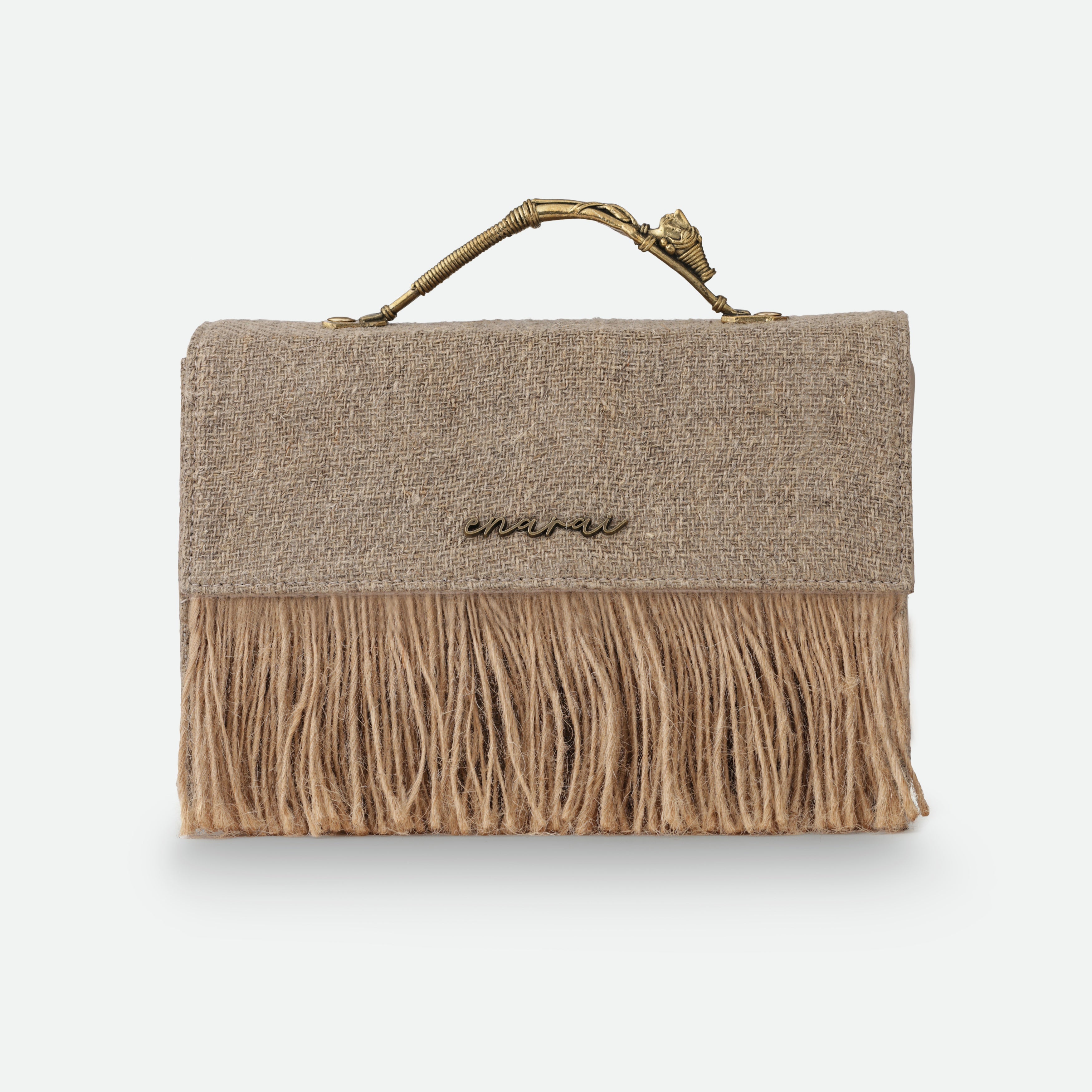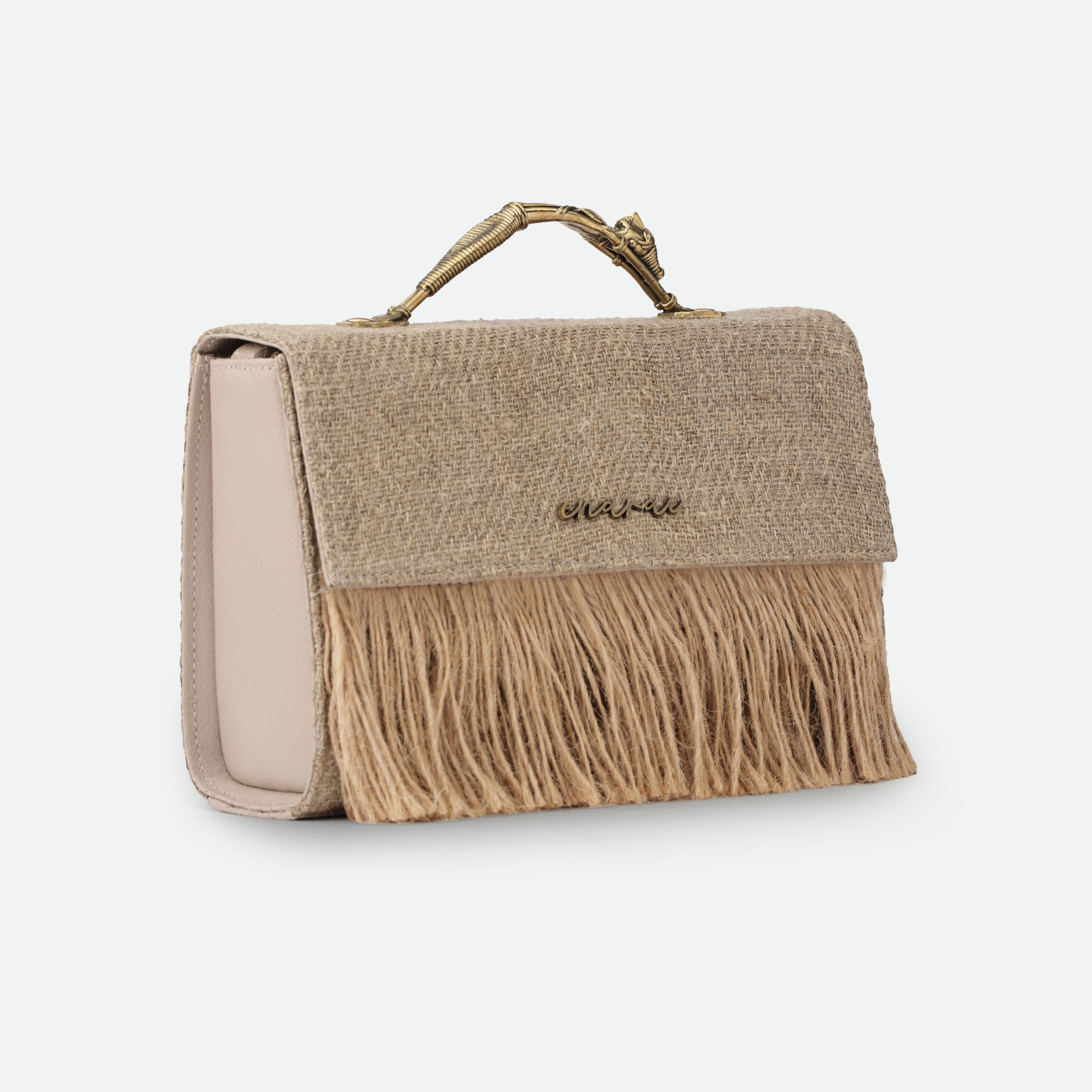enarai bags are entirely handmade
expect natural variations in leather grain, hand-woven hemp fabric, and variations in dokra handle curvature & metal colour
care instructions
We use vegetable-tanned analine Indian cow leather. Our leather is responsibly sourced from Leather Working Group certified tanneries.
Vegetable Tanned Leather is championed by leather connoisseurs for it's non-toxic, natural, slow and artisanal treatment process. Because vegetable tanning uses no synthetic coatings, the leather is allowed to ‘breathe’ - it is able to absorb moisture and oils, and goes on to form a ‘patina’ with age over time. This soft leather is delicate and will age uniquely over time.
- Protect from direct light, heat and rain. Should it become wet, dry it immediately with a soft cloth
- Keep bag stuffed with tissue paper to help maintain its shape and absorb humidity, and store in the provided dustbag
- Clean with a soft, dry cloth
- Avoid commercial leather cleaners
- Scuffs blur over time and gradually blend into the aging leather patina
100% natural hemp yarn is hand-woven using a loom to create this herringbone weave. The result is a textured, undulating, natural fabric.
- Protect the delicate hemp fabric from direct light, heat and rain. Should it become wet, dry it immediately with a soft cloth
- Keep bag stuffed with tissue paper to help maintain its shape and absorb humidity, and store in the provided dustbag
- Clean with a soft, dry cloth
- Avoid scrubbing or using commercial cleaners
- Avoid damp and humid storage conditions
Dokra is a 4000 year old craft made entirely by hand using no electricity. The nature of handmade products include natural variations in curvature, metal colour, and handle design. These are brass handles that can last over a 1000 years.
- Dokra handles can be polished if desired using any brass cleaner available to you.
- If you do polish your handle, ensure the bag body is protected from the cleaner by using a protective plastic or cloth when polishing the handle.
- Natural jute fringe has a rough textured finish. The untreated fiber will tend to pill - do not pull on any stray fuzz, pat down gently to realign
- Use fingers to gently organize the jute fiber fringe, do not use a comb or other devices
Materials Used
We use vegetable-tanned analine Indian cow leather.
Our leather is responsibly sourced from Leather Working Group certified tanneries.
Our leather is treated with non-toxic vegetable tannins (organic materials and natural tannins derived from the barks, leaves and branches of trees and plants). The natural fibers of the leather are visible in the finished product, lending an authenticity and personality to the leather. This allows the leather to breathe, evolve and gradually develop a unique patina over time.
Natural vegetable tanning takes up to a month and requires skilled manual labour as compared to chrome tanning which is mechanized, takes only one day, and ensures the leather always looks the exact same even after years of use.
LWG-certified responsibly sourced hides are obtained from animals that have passed naturally or are a by product of the meat industry contributing to a circular economy and ensuring no part of the animal is wasted.
Animal welfare, traceability, environmental sustainability, reduced carbon emissions, working environments and workers rights are all audited and monitored in LWG certified tanneries.
India is one of the top 5 countries for leather export. Particularly when it comes to artisan-made finished leather products, several leading global brands source their inventory from workshops in India not only because the quality is good, but also because of the generational knowledge in leather craftsmanship.
Hemp fibers are hand woven to create the hemp fabric we use.
Hemp cultivation is environmentally sustainable - the plant requires much less water, pesticides, herbicides and fungicides than most crops. Because of its resiliency, it's also regarded as a natural way to clean up soil pollution. Hemp actually absorbs carbon dioxide while it grows through natural photosynthesis, making it carbon negative from the get-go.
The Dokra Collection: Season 1

10% of every enarai sale goes to support the enarai foundation. Thank you for being a steward of craftsmanship.
This 4500-year-old craft has been passed down over generations without any formal education. The enarai foundation strives to document, highlight, preserve and incentivize the communities that create these craft forms by including them in the evolution of creative and sustainable craft preservation.



